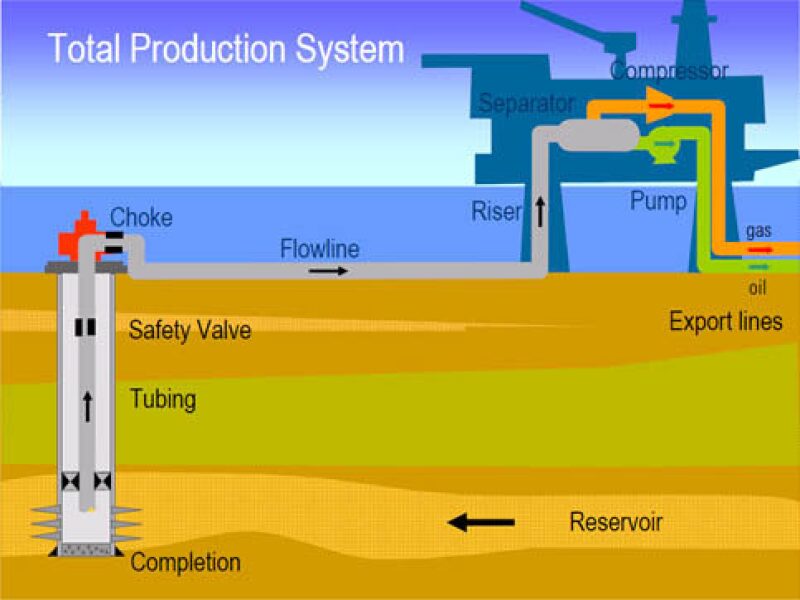Traditionally, the Project, Facilities, and Construction discipline holds a dinner-panel during the SPE Annual Technical Conference and Exhibition. This year was no exception. I had the pleasure of moderating the panel that was held at the World Trade Centre in Dubai. The topic was “Integration Between Facilities and Subsurface Engineers: Crucial in an Era of Low Price Oil.”
The panel included Neeraj Nandurdikar, director of oil and gas, Independent Project Analysis (IPA), USA; Jamal Abboud, artificial lift specialist, ADCO, Abu Dhabi; and David Aron, managing director, Petroleum Development Consultants, London.
Abboud shared his experience in the onshore oil fields of Abu Dhabi, where aquifer water is used for waterflooding. A survey of existing electrical submersible pumps used for lifting aquifer water and surface injection pumps revealed that most of the pumps were operating below the rated point. This caused the waste of power and pumps operating off the best efficiency points, which was a result of double safety factors used by subsurface and facilities engineers. As a result of having joint working sessions between different disciplines, new water injection clusters were reduced in size, resulting in substantial cost saving and more efficient operation.
Communicating the subsurface uncertainties to facilities engineers is particularly important in new field developments. Most companies use a stage-gate process for new developments. New projects are broken into stages or phases, with approval required at each stage before progressing to the next stage (Jahn 2008 and Schulte 2016). Risk and sensitivity analyses using a multidiscipline approach are performed on the new developments to analyse various parameters such as reserves estimates, production profiles, plateau rates, and oil prices. A variety of economic indicators are used to evaluate a new development, including net present value (NPV), internal rate of return (IRR), unit technical cost (UTC), capital intensity (CI), or pay-out time, among others.
Nandurdikar highlighted the importance of the flow of information and clarity of communication between various subsurface, facilities, and project teams. He referred to a quote attributed to George Bernard Shaw:
The single biggest problem in communication is the illusion that it has taken place.
Project management professionals tend to focus on the project implementation aspects. A project is considered a successful one if it is built to specifications, completed on schedule, within budget, and executed with zero or few lost time injuries. When a new development project is viewed in its entirety, the picture may look different.

IPA analyzed upstream projects performance over the last decade. Nandurdikar noted that, surprisingly, the analysis showed that 75% of projects failed to achieve the NPV that was planned (or estimated) at the time of the project sanction. The high oil prices of past years, to some extent, disguised the poor project performance.
Substandard performance of upstream megaprojects has been a concern for a number of years (Merrow 2012 and Whitfield 2014). One of the contributing factors is the poor front-end loading (FEL). In the context of new field development projects, FEL includes the appraisal and definition of the reservoir development scheme, facilities, and well construction program.
Aron, reflecting on his own work experience as a petroleum engineer and a facilities engineer, asked the question: Subsurface engineers have happily integrated with geologists, so why the problem with facilities engineers?
Subsurface engineers deal with risk and probability. Facilities engineers usually work with or for contractors and they have a fixed scope of work. Indeed, many contractor facilities engineers never meet a reservoir engineer. Aron noted that the current economic climate reduces the margin for error. Effective communication is essential for projects to be properly designed at the engineering phase, not the production phase.
The panel was followed by a lively discussion among the audience. One veteran reservoir engineer said that he only fully appreciated facilities engineers’ work when he was assigned to the project team and had day to day meetings with them and the engineering, procurement, and construction contractor.
SPE papers from recent conferences address different approaches to integrate surface and subsurface engineers (Bertoli 2015, Sawiris 2015, Caicedo 2015, and Davies 2016).
This was not the first time that the SPE organized a panel on bridging the gap between surface and subsurface engineers. With integration between facilities and reservoir engineers even more important in today's low oil price, low-cost environment, there is little doubt that there will be more SPE panels or workshops on this topic.
For Further Reading
OMC 2015-378. 2015. 360 Degree Integration for Successful Complex Reservoir Development by S. Bertoli et al.
SPE 174932. 2015. Uncertainty and Risk Management Plans are Critical for Team Alignment and Better Decision Quality by R. Sawiris et al.
SPE 177436. 2015. A Systematic Integrated Approach to Evaluate Artificial Lift Requirements While Dealing With High Uncertainty by S. Caicedo et al.
SPE 181026. 2016. Enhancing Well Delivery Performance Through Discipline Integration by R. Davies et al.
SPE 181422. 2016. Successfully Developing Fields in a Mature Region Whilst Revenues are Going Down, a Non-Operating Partner Prospective by R. Schulte et al.
Hosseini, S. and Khalilian, J. 2012. Considerations in Designing Multiphase Flow Lines, Pipeline and Gas Journal, 239 (8).
Jahn, F. et al. 2008. Chapter 15: Hydrocarbon Exploration and Production, 2nd Edition, Elsevier.
Merrow, E.W. 2012. Oil and Gas Industry Megaprojects: Our Recent Track Record, Oil and Gas Fac, 1 (2): 38–42.
Whitfield, S. 2014. Taking a Closer Look at Why Projects Fail, Oil and Gas Fac, 3 (5): 18–24.

